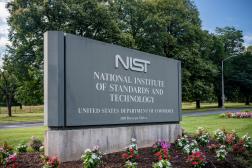NIST sets sites on expanded e-commerce offerings

The National Institute of Standards and Technology is known throughout the world as the standard-bearer for measuring everything from nanoscale devices to earthquake-resistant skyscrapers to global communications networks.
But when it came to online transactions with external customers, NIST officials recognized the agency needed to modernize the user experience for its customers, according to Hannah Brown, acting director of NIST’s Business Operations Office.
Like many federal agencies, NIST oversees a wide range of government services and operating divisions within the Department of Commerce. Its 3,400 scientists, engineers and technicians play a crucial role in keeping the nation’s atomic clocks, electric power grids, computer systems and manufacturing standards up to date. It also partners with more than 1,300 manufacturing industry specialists and works with another 2,700 associates from academia, industry and other government agencies.
Unlike most agencies, though, NIST generates income — from manufacturers, power grid operators, scientists and research institutions — by offering for purchase an extensive catalog of standard reference data and materials in chemistry, physics, engineering, computing and other sciences along with highly specialized calibration services.
“We’re very proud of what we do,” said Brown. “We offer world-class calibration services and standard reference materials … that are critical to commerce and make a big difference for a number of different industries. So we want the customer experience to reflect the value that we’re providing,” she said.
Rethinking the customer service equation
As far back as 2014, Del Brockett, NIST’s CIO at the time and now chief operating officer, recognized the need to modernize how NIST handled its products and services orders. Up until then, NIST’s various departments relied primarily on a paper-based system, email and faxes for taking orders.
Brockett, however, believed that NIST needed more than an e-commerce solution. NIST would also benefit from a broader, enterprise customer relationship and case management platform to improve the agency’s “insight into its customers and partner interactions,” recalled Brown.
“If you really want to have a sense for the work that you’re doing, and the customer you’re providing services to — and if you want metrics around that to understand what you’re doing to make real improvements — then you’re going to need a platform that gives you that overall view. That’s really the point of a good CRM,” said Brown. “The nice thing too, is that it offers a higher level of accountability into the work we do, and transparency into how we’re providing those services.”
That belief was fueled in part by a series of successful deployments of a cloud-based, enterprise workflow management platform at that time.
The deployments gave NIST employees real-time insights into the progress of internal projects and resulted in a wave of improvements in customer service internally. That sparked a search for something similar to support NIST’s external customers and ultimately, a modern enterprise CRM and case management platform, according to Brown. NIST decided in late 2015 to begin work with Salesforce’s Service Cloud platform.
One factor that contributed to that decision, beyond the continuous updating software-as-a-service can offer, was its availability within the government’s FedRAMP-approved cloud environment, meaning it has to keep meeting the government’s detailed security requirements.
“Security and privacy are a big deal for us. We have an extensive process that we take to make sure we are guarding the data in our systems as well as we possibly can,” Brown noted.
Once the CRM system was deployed and ready for testing, the operations and IT team chose a low-pressure rollout, letting NIST’s products and service team leaders experiment with it.
“That was an important decision,” said Brown. “We knew the system itself was a great tool to use. But it was something we wanted people to use NIST-wide, so it was important to give people an opportunity to try it out. Like every new tool, it’s not about the technology, but the people and the approaches they use that really make the difference.”
Having a robust case management component also provides an important dimension of accountability, Brown said.
“It’s not just a way to gather data. You have a way to follow through on promises made,” she said. “And that’s a big deal. When you’re a private company, that’s really critical because you have a bottom line to meet. When you’re in federal government, that’s really critical because that’s your constituency — that has everything to do with our mission.”
Expanding e-commerce front-end
After getting the CRM system in place on the backend, NIST then began to tackle the work of improving the e-commerce interface experience for customers on the front end.
“There were early versions of e-commerce spread all over the place on our internal legacy systems, but there wasn’t a way for customers to go online and request quotes and purchase products directly and in a unified way,” Brown explained.
NIST’s development team opted to build on Salesforce’s B2B Commerce platform, deploying a foundational e-commerce platform in the spring of 2019 that supports NIST’s calibration services. The platform captures online orders for calibrations and funnels them into an order management process. If customers have questions, they’re able to initiate a request via email that becomes a trackable case and can be associated with every potential order, according to Brown.
Within a matter of months since then, NIST had digitally processed about $5 million in orders from about 900 different customer accounts, giving NIST officials confidence they were headed in the right direction.
“One of the factors that has everything to do with our success and, or, failure — and I mean both of those words intentionally— is having the right team, selecting the right tool, and the vendor you choose to work with who will do your development and manage the project,” Brown said.
Based on the initial positive reviews from customers, NIST is currently seeking information on a new round of development projects to expand on the capabilities offered through the e-commerce platform.
Next up on NIST’s development list are plans to make the agency’s standard reference materials and data references also available online, as well as training resources, according to Brown.
Longer-term, NIST has set its priorities on expanding e-commerce functionality for all of its products and services across the agency and creating a simpler, more unified experience for its constituents, said Brown.






